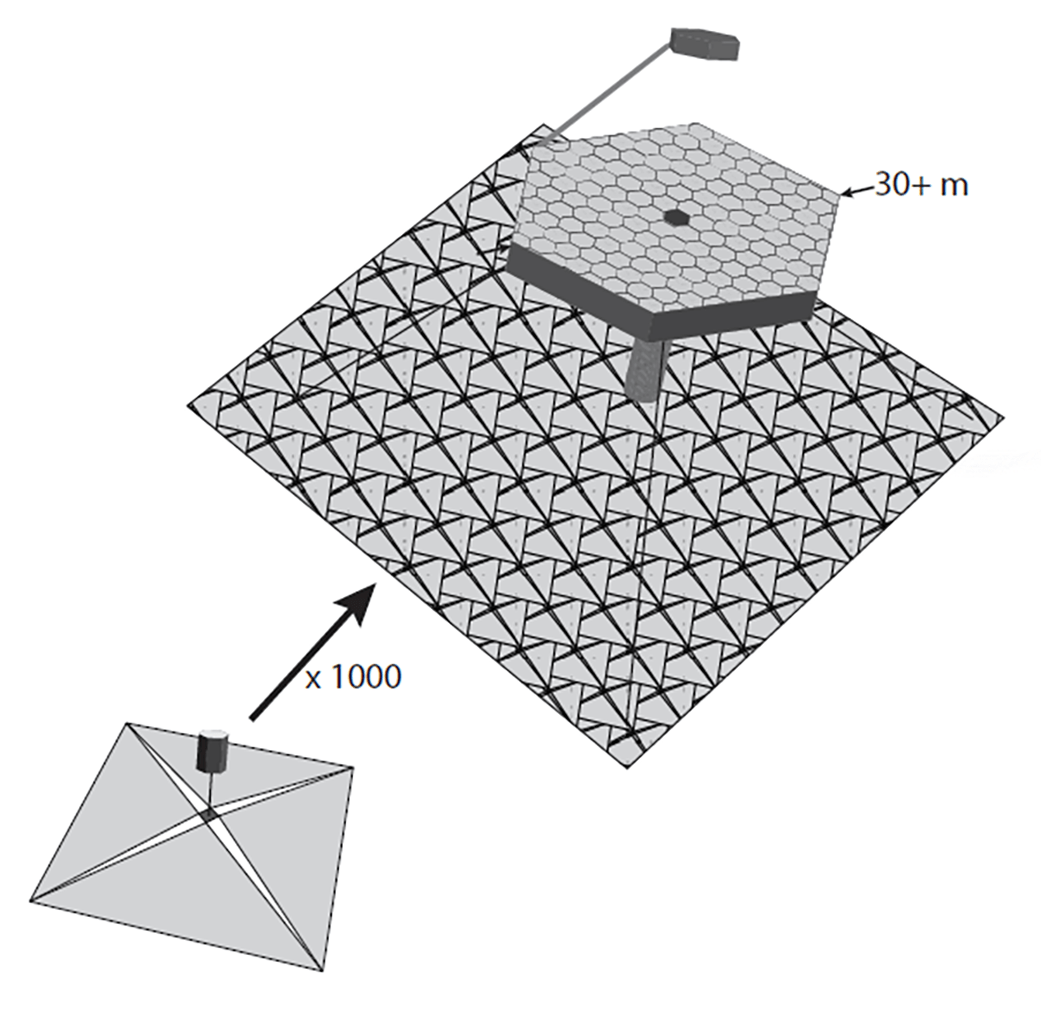Dmitry Savransky
Cornell University
We propose a modular, self-assembling architecture enabling the construction of 30+ m diameter, reflective, space telescopes with active optics. The entire structure of the telescope, including the primary and secondary mirrors, secondary support structure and planar sunshield will be constructed from a single, mass-produced spacecraft module. Each module will be composed of a hexagonal ~1 m diameter spacecraft topped with an edge-to-edge, active mirror assembly. The mirror will have at least thirty degrees of freedom, driven by mechanical actuators, so that the assembled primary and secondary mirrors will be fully active and can be phased and given the appropriate shape post-assembly. Modules will be launched independently as payloads of opportunity, and navigate to the Sun-Earth L2 point using a deployable solar sail. The solar sails will then become the planar telescope sunshield during telescope assembly, which will proceed autonomously with no additional human or robotic intervention.
The target mission concept is a large-aperture implementation of the Large Ultraviolet/Optical/Infrared Surveyor (LUVOIR), which has been highlighted in the NASA Astrophysics roadmap and is currently being studied for the 2020 decadal survey. In the NIAC Phase I, we propose to carry out detailed simulations of the spacecraft flight and rendezvous dynamics in order to set requirements on the solar sail area and loading, along with analyses of the mirror assembly to validate the ability to achieve the required surface figure in the assembled primary and secondary mirrors.
This proposal is directly in line with the priorities of the NASA Technology Roadmaps in Science Instruments, Observatories, and Sensor Systems and Robotics and Autonomous Systems. This architecture provides a credible path to the construction of a giant space telescope, which would be infeasible using the design and assembly techniques employed for previous generations of space telescopes including Hubble and James Webb. A space-based aperture of this scale would enable transformative and unprecedented science, including mapping the distribution of surface cover on Earth-like planets, resolved imaging of stellar populations over a span of 10 billion years, dark energy/dark matter searches, and much more. The demonstration of on-orbit autonomous assembly will also be directly applicable to a host of other NASA missions and of value to the broader aerospace community.































